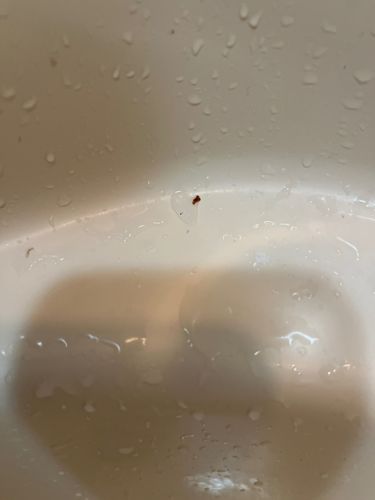Mite (likely Dust Mite or similar small mite)
Scientific Name: Acariformes (suborder for dust mites and many others)
Order & Family: Order: Acari (Mites and Ticks), Family: Varies widely, common families include Pyroglyphidae for dust mites.
Size: Typically microscopic to very small, ranging from 0.1 mm to 0.5 mm in length. The specimen in the image appears to be at the larger end of this range or collected dust/debris.

Natural Habitat
Indoor environments, especially beds, carpets, upholstered furniture, and areas with dust accumulation. They thrive in warm, humid conditions.
Diet & Feeding
Mainly detritus, including dead skin cells, dander, and other organic debris. Some mites are parasitic on plants or animals, but the one pictured is likely a free-living or detritus-feeding mite.
Behavior Patterns
Mites are often found in environments with high humidity and decaying organic matter. Dust mites are known to feed on dead skin cells shed by humans and animals.
Risks & Benefits
Potential risks include triggering allergies and asthma symptoms in susceptible individuals due to their fecal matter and body fragments. Generally, they do not bite or transmit diseases to humans. Benefits are negligible in an indoor environment, although some mites are beneficial predators in specific ecosystems.
Identified on: 8/12/2025